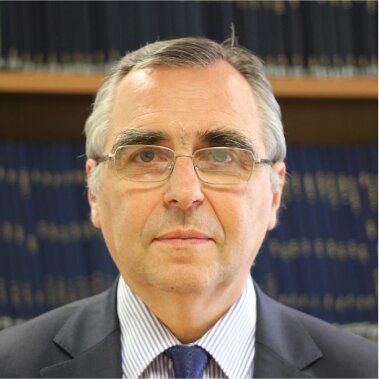Abstract
MULTILIGUAL DICTIONARY OF MEDICAL PHYSICS TERMS – UPDATE AND RELEVANCE FOR CLINICAL ENGINEERING
INTRODUCTION: The Multilingual Dictionary of Medical Physics Terms was initially created as a free resource to support the education and training of colleagues from Low and Middle Income (LMI) Countries. A typical professional pattern in these countries is that medical physicists often perform the duties of clinical engineers and vice-versa. This way the Dictionary was made to include many engineering/technical terms related to radiotherapy and medical imaging (X-ray, Ultrasound, Nuclear Medicine, Magnetic Resonance and other related equipment) – www.emitdictionary.co.uk. The current update follows the same idea. The Dictionary is now linked with the Medical Physics e-Encyclopaedia EMITEL (www.emitel2.eu), thus forming a one-stop reference point on the subject.
METHODS: The Dictionary project development passed through several stages: development of Thesaurus, parallel translation to various languages; refereeing. A specific system was developed (based on unique identificators, related to the English terms), which allows cross-translation between any of the existing 30 languages. The current project for Dictionary Update keeps this system, but extends the number of terms, as these medical devices develop very rapidly. The initial teams of translators (from various countries) translates the terms in their respective language, using own standardized system.
RESULTS: The initial Dictionary project was developed mainly on-line and included parallel work of more than 200 specialists from 36 countries. A total of 3,100 terms are included in the initial Thesaurus in English. These now exist in 30 languages (9 alphabets): English, French, German, Italian, Swedish, Spanish, Portuguese, Bulgarian, Czech, Greek, Hungarian, Lithuanian, Polish, Estonian, Romanian, Turkish, Latvian, Russian, Thai, Arabic, Iranian, Bengal, Slovenian, Malay, Chinese, Croatian, Japanese, Korean, Finnish, Georgian. The new Update project uses the already prepared system and existing website. The new terms to be included cover both the new terms in medical imaging and radiotherapy equipment, and terms related to medical equipment management. The latter was a results from the feedback of many colleagues from LMI countries, who perform both functions – related to medical physics and clinical engineering. The new project simultaneously updates the Thesaurus, the translation of the terms and the encyclopaedic articles, related to these (as part of the parallel project of Encyclopaedia Update). The official website statistics shows more than 7,000 users per month, most of these from Europe and Asia. The Multilingual Dictionary is finding a sound place in the educational courses in LMI countries, as most of the new terminology comes from English.
CONCLUSION: The Multilingual Dictionary is an international collaborative work. The on-line method of work, the unique system and the specially made website work flawlessly for a number of years. The Dictionary is a free resource, used by thousands of colleagues each month. This helps the professional development in LMI countries. The usefulness of the Multilingual Dictionary was one of the main reasons for the EU Leonardo Da Vinci Award, received by the team of the initial project EMIT (Coordinator S Tabakov). The current Update project includes more terms relevant to clinical engineers. The experience from this project could help forming further references related to Biomedical Engineering.

